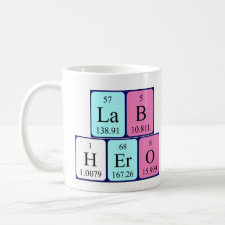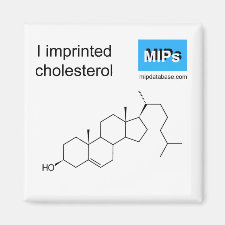
Authors: Hsu CW, Yang MC
Article Title: Enhancement of the imprinting effect in cholesterol-imprinted microporous silica.
Publication date: 2008
Journal: Journal of Non-Crystalline Solids
Volume: 354
Issue: (34)
Page numbers: 4037-4042.
DOI: 10.1016/j.jnoncrysol.2008.05.037
Alternative URL: http://www.sciencedirect.com/science/article/B6TXM-4SYY5VP-1/2/d628c793cc756bc4c508fd3988e2afba
Abstract: A sol-gel method has been used to fabricate a cholesterol MIP for application in polar solutions. In this study, (cholesteryl propylcarbamate)triethoxysilane and tetraethyl orthosilicate were used as the hydrophobic monomer and crosslinker, respectively. The MIP had a larger pore volume when formation of the polymer was catalyzed at a higher pH than when it was formed at lower pH values, with the pore diameters being 3.5ánm and 2ánm, respectively for materials formed at high and low pH values. Both of these pore volumes were greater than those found for the respective control polymers formed without template. However, only the polymers formed at low pH values showed an imprinting effect. Compared with other methods explored, the sol-gel procedure gave only a small amount of non-specific binding for both the MIP and NIP when synthesized at low pH values. The largest imprinting-induced promotion of binding (IPB) value of the MIP (13á650%) was obtained with [HCl]á=á0.01áM in the sol-gel solution. The MIP showed high selectivity towards cholesterol in comparison with other steroid hormones, and also to a lesser extent recognized vitamin D3 in methanol solution containing 5ávol.% water
Template and target information: cholesterol, (cholesteryl propylcarbamate)triethoxysilane
Author keywords: Biomaterials, Organic-inorganic hybrids



Join the Society for Molecular Imprinting

New items RSS feed
Sign-up for e-mail updates:
Choose between receiving an occasional newsletter or more frequent e-mail alerts.
Click here to go to the sign-up page.
Is your name elemental or peptidic? Enter your name and find out by clicking either of the buttons below!
Other products you may like:
 MIPdatabase
MIPdatabase









